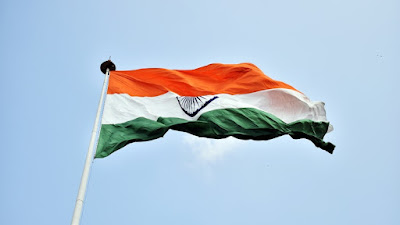Fifth
Phase :
Government
of India Act 1935:
·
Most of the provisions of the Constitution of
India are derived from this Act.
·
This law is described as a 'copy' or 'matrix' of
the Constitution of India.
·
There are 321 provisions and 10 schedules in
this Act.
· The law introduced the "All India Federal System" in India.
Note: 'Confederation' is called 'Federation' in English.
·
The English word 'federation' is derived from
the Latin word 'Fodas'.
·
'Fodus' means 'Agreement'.
Federal features:
·
There are two types of government, central and
state.
·
The division of powers between these two
governments.
·
Written constitution.
·
Strict constitution.
·
An Independent Judiciary.
·
Jurisdiction.
·
The height of the Constitution.
· Following this Act, the division of power between the Central and the States is as follows.
1. Articles in the Central List - 59
2. Articles in the State List - 54
3. Articles in the Joint List-36
·
Granted 'Essential Powers' to the Governor-General.
·
The law abolished dual government in the states
and introduced responsible government.
·
This Act was the first in India to introduce a
dual government system at the Center.
·
The Act introduced a bicameral system in the
states.
Note:
·
As a bicameral system, the Rajya Sabha is called
the Upper House (Legislative Council) and the Lower House (Legislative
Assembly).
·
Introduced in 6 of the 11 states in the country (Bombay,
Bengal, Bihar, Madras,United Province, Assam).
·
By what law was the Federal Court established on
01 October 1935 in Delhi.
·
The law was enacted by the Reserve Bank of India
in Bombay.
·
According to the law, women, workers, SCs and
STs are allotted special constituencies in the legislatures.
·
For the first time in the country, women were
given the right to vote under this law.
·
The Act established a 'Federal Public Service
Commission' for government employees at the center and a 'Federal Public
Service Commission' for government jobs in the states and a 'Provincial Public
Service Commission' for the replacement of government employees in the states.
·
Establishment of a 'Joint Public Commission' for
the recruitment of government employees in two or more states.
Cripps
Embassy (1942-March 22):
Cripps' embassy sent the
British government to India to seek Indian assistance during World War II.
Nominations:
·
The Commission was the first to propose that if
the Indians provided assistance to the British during World War II, they would
grant India a "temporary reprieve" immediately after the end of World
War II and set up a Constituent Assembly to draft a constitution.
Criticism:
· He described Mahatma Gandhi's creeps' proposals as' checks dated in front of a bankrupt bank '.
Cabinet Mission: (23 March 1946)
·
Lord Clement Attlee, the leader of the Labor
Party, sent a 'Cabinet Embassy' to India with the intention of giving India
independence after coming to power in Britain.
·
Members of the Cabinet Mission:
1. Lord Petick Lawrence (President)
2.
Sir Stafford Cripps
3.
Alexander P.V.
Recommendations:
·
Elections to the Constituent Assembly will be
held in June and July 1946, giving India independence after the Constitution of
India is drafted.

